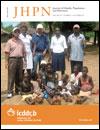Stress and Its Effects on Medical Students: A Cross-sectional Study at a College of Medicine in Saudi Arabia
DOI:
https://doi.org/10.3329/jhpn.v29i5.8906Keywords:
Academic achievements, Cross-sectional studies, Impact studies, Medical education, Stress, Saudi ArabiaAbstract
Medical education is perceived as being stressful, and a high level of stress may have a negative effect on cognitive functioning and learning of students in a medical school. This cross-sectional study was conducted to determine the prevalence of stress among medical students and to observe an association between the levels of stress and their academic performance, including the sources of their stress. All the medical students from year one to year five levels from the College of Medicine, King Saud University, were enrolled in the study. The study was conducted using Kessler10 psychological distress (K10) inventory, which measures the level of stress according to none, mild, moderate, and severe categories. The prevalence of stress was measured and compared with the five study variables, such as gender, academic year, academic grades, regularity to course attendance, and perceived physical problems. The response rate among the study subjects was 87% (n=892). The total prevalence of stress was 63%, and the prevalence of severe stress was 25%. The prevalence of stress was higher (p<0.5) among females (75.7%) than among males (57%) (odds ratio=2.3, χ2=27.2, p<0.0001). The stress significantly decreased as the year of study increased, except for the final year. The study variables, including being female (p<0.0001), year of study (p<0.001), and presence of perceived physical problems (p<0.0001), were found as independent significant risk factors for the outcome variables of stress. Students’ grade point average (academic score) or regularity to attend classes was not significantly associated with the stress level. The prevalence of stress was higher during the initial three years of study and among the female students. Physical problems are associated with high stress levels. Preventive mental health services, therefore, could be made an integral part of routine clinical services for medical students, especially in the initial academic years, to prevent such occurrence.
Key words: Academic achievements; Cross-sectional studies; Impact studies; Medical education; Stress; Saudi Arabia
DOI: http://dx.doi.org/10.3329/jhpn.v29i5.8906
JHPN 2011; 29(5): 516-522
Downloads
6586
3399

